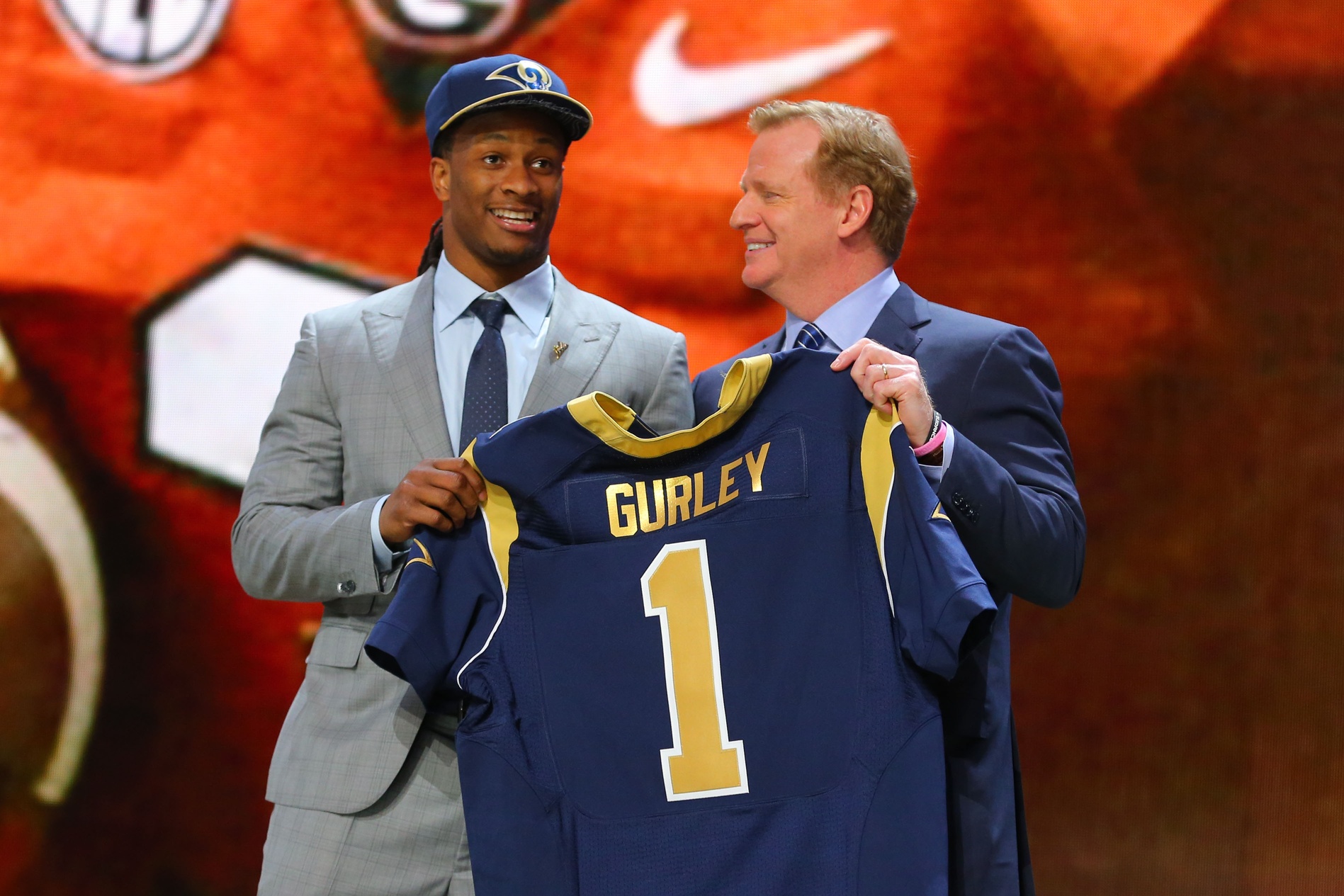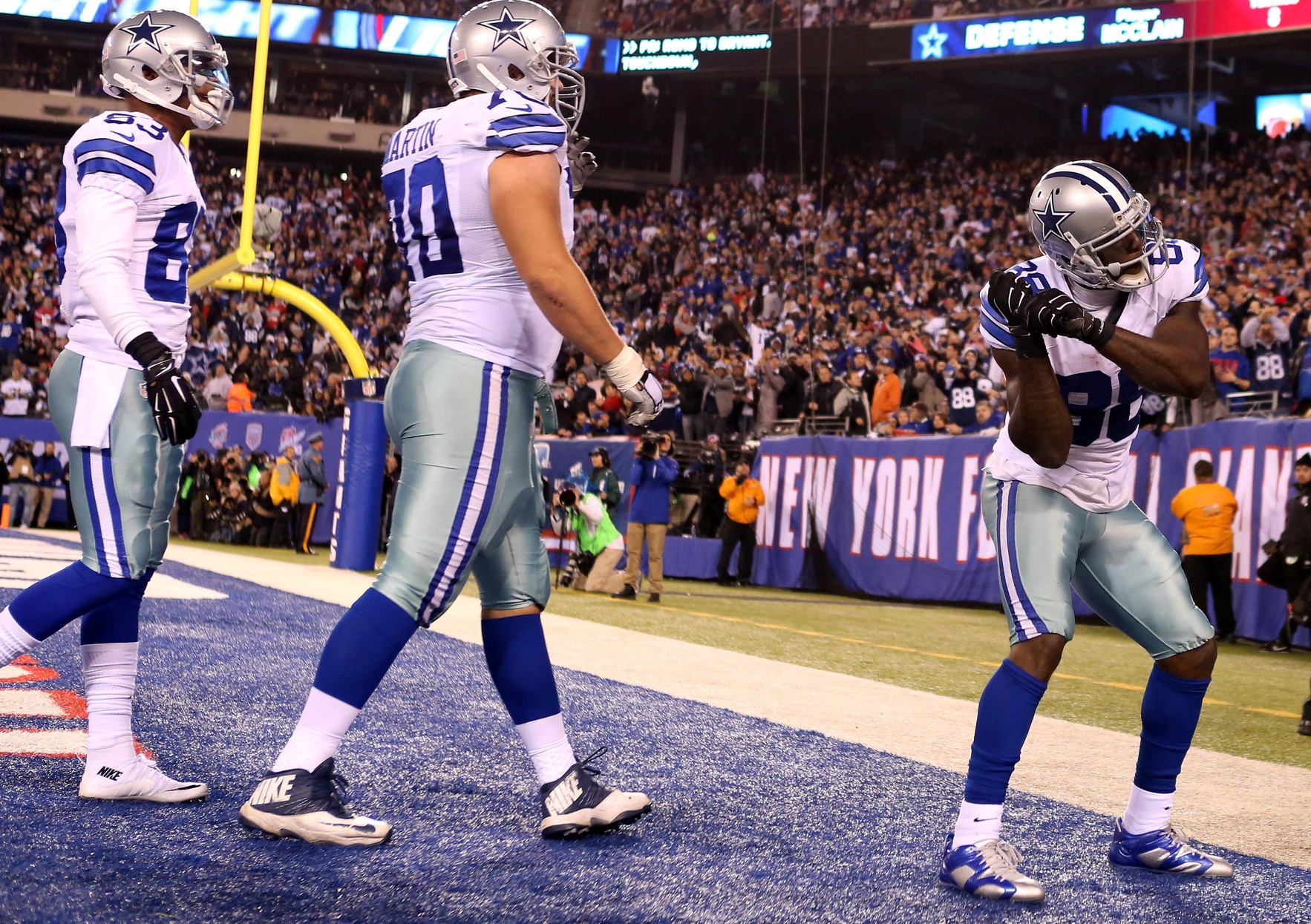The key to success in daily fantasy sports is research. With our Trends tool, research is easy.
Description
(Written the Friday before kickoff)
In NFL DFS, any time we can project a backup running back to assume a starter’s workload, that RB will become almost an auto-play (depending on the matchup), as so much of a RB’s value is determined by volume. But this isn’t the only scenario in which a RB benefits from more touches in a given week.
A team may also run more plays depending on the game script and/or the pace of its opponent. You can gain insight into these factors by checking out our NFL Matchups page each week, and you can also utilize the Trends tool.
This week, I’ll be looking at the very valuable — and perhaps overlooked — ‘Projected Plays Percentage’ filter among running backs.
The Trend

Let’s take a look at what is going on within the trend. It’s actually pretty straightforward: I am looking for players who are projected to score at least five points based on their median projections, and I also want RBs to command at least a 50 percent market share in snaps. This gives me a rough baseline cohort upon which I can build.
Now, let’s look at what’s going on in the Projected Plays filter. Essentially, what we do here is tally up the number of projected plays for each NFL team each week, and that calculation is based on things like the relative paces of the team and opponent. Finally, we compare the projected play totals of each team playing and rank them by percentile.
The average ownership within this trend is high, but I think it is skewed somewhat by extreme matchups. Here’s an example of what I mean:

When you add an ‘Opposing Team is the 49ers’ filter, the average ownership nearly doubles (and the Plus/Minus skyrockets!). Some of these situations will be more obvious than others, but you can still find low ownership plays within the sample. For example, let’s look at what happens when the opponent is the Steelers rather than the 49ers:

The Plus/Minus remains high, but the ownership drops quite a bit. Of course, we are dealing with pretty small samples here.
The Matches
Now, let’s look at this week’s plays.

One name immediately jumps out: David Johnson vs Minnesota. We think of the Vikings as having a grind-it-out defense, but actually the Cardinals offense on average has run a play every 26.6 seconds while the Vikings defense allows a play every 25.9 seconds. Of course, the Vikings offense runs a play only once every 27.6 seconds — the league’s fourth-slowest mark — so game script is largely baked into the defense’s numbers.
Still, when you put it all together, we are projecting the Cardinals to remain in the top third in Week 11 in terms of total plays run. Johnson is the fourth-most expensive back this week and is currently projected to have the fourth-highest ownership. The opponent is tough, but volume should not be a concern based on this trend.
As for the other matches, we know how positive LeGarrette Blount’s matchup is as the lucky RB who gets to face the 49ers this week. Neither the Lions nor the Jags play at a particularly fast pace, but game script should be on Theo Riddick’s side, as his team is currently a near-touchdown favorite to win. The Giants have made a concerted effort to play at a faster pace in 2016 and their offense currently ranks fifth in that category. That means that Jordan Howard should see a few more plays this week, unless he doesn’t — depending on whether he is injured or ‘injured.’
Results
(Written Sunday night after games)

Although the Vikings don’t seem like an obvious team to target with opposing offenses, Johnson did just fine. And, really, the Vikings have been worse against the run than the pass this year, and that was evident in their +0.7 Opponent RB Plus/Minus coming into Sunday’s game. Add in the fact that we were projecting plenty of plays for the Arizona offense, and the end result was an extremely productive day from Johnson. He was both lower-owned and cheaper than Le’Veon Bell, whom he slightly outscored.
In the mid range, both Riddick and Howard returned slightly positive value, while Prosise comfortably exceeded his implied point total. Howard had one long run on which he was tackled inside the five-yard line. Riddick and Prosise both left their games due to injury — Riddick was able to return, but Prosise was not. It’s not too difficult to envision scenarios in which these backs could’ve provided much more value on Sunday.
Review
Probably the biggest takeaway from this week’s trend is what happened with Johnson. Although the matchup didn’t look overly inviting on the surface, we knew that Johnson was going to get his usual huge workload (and he had 22 carries and 11 targets), and we knew that the Cardinals were expecting to run more offensive plays than many other teams around the league. At a discounted price and ownership, he was one of the hidden gems of Week 11.





